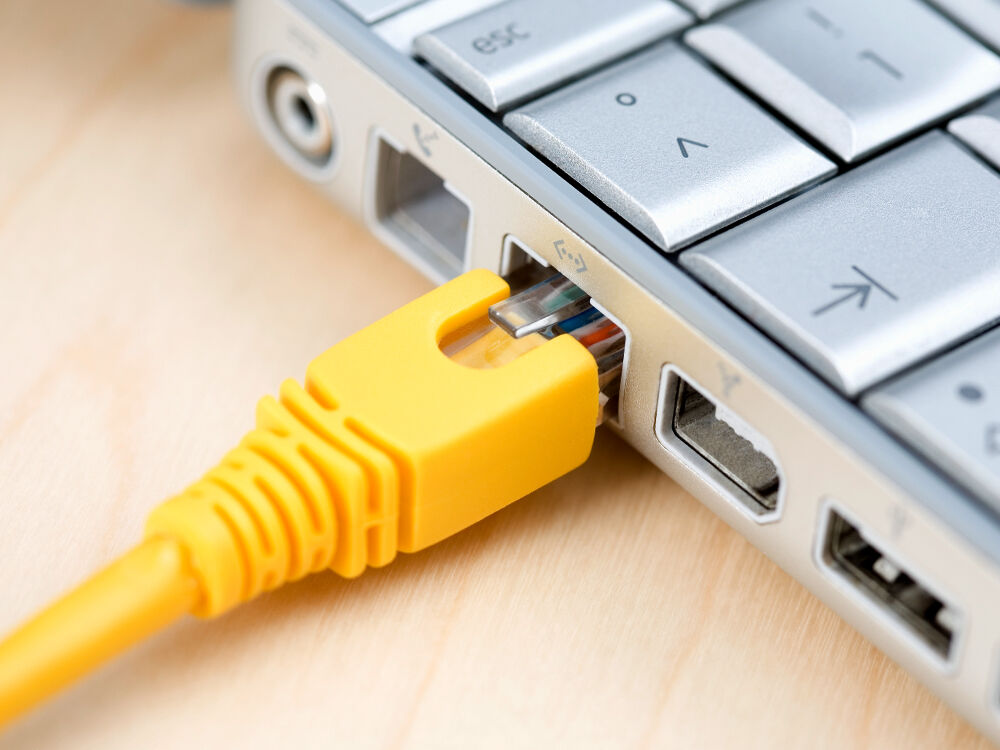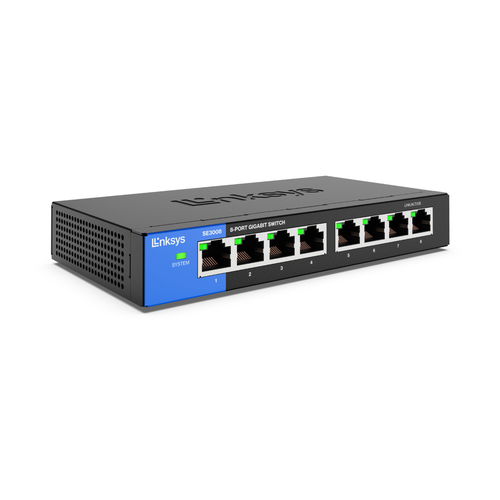What Is Ethernet?

Technically speaking, the Institute of Electrical and Electronics Engineers (IEEE) defines Ethernet as protocol 802.3. But just plain "Ethernet" is a whole lot easier to say, and it’s likely how you’ve come to know that essential bringer of Internet.
Jargon aside, Ethernet simply refers to the most common type of Local Area Network (LAN) used today. A LAN—in contrast to a WAN (Wide Area Network), which spans a larger geographical area—is a connected network of computers in a small area, like your office, college campus, or even home. You might even be connected to one as you read this.
What Ethernet is not, though, is wireless. In a world where WiFi seems to rule our connected lives, you might be wondering: Is there even still room for that rectangular Ethernet port on your laptop? From serious business people to serious gamers, that answer is "yes, there definitely is." And here's why.
Ethernet: Speeds, Cables and Setup
Because Ethernet has been kicking around since the early 1970s, traditional Ethernet speeds clocked it at only 10 megabits per second (Mbps). Fast Ethernet eventually bumped data transfers up to 100 Mbps, but after huge technological strides, today's Gigabit Ethernet supports speeds of up to 1,000 Mbps. Though it's currently limited to businesses on the cutting edge of the tech world, 10 Gigabit Ethernet with speeds of up to 10,000 Mbps is also on the way.
As a wired protocol, the type of Ethernet cable you use matters. Most commonly, you'll see Category 5 (or CAT5) Ethernet cables. These support both traditional and Fast Ethernet, while Category 5e and Category 6 (CAT5e and CAT6) cables can handle Gigabit and 10 Gigabit Ethernet respectively.
These cables run from your modem or modem-router combo (known as a gateway) to the Ethernet ports on your online-enabled devices, like computers, laptops, or smart TVs. If your device doesn't have an Ethernet port built-in, you may be able to use a USB-to-Ethernet adapter.
Ethernet vs. WiFi: Benefits
Signal Stability
While setting up a wired LAN is a bit more costly and time-consuming than a WLAN (Wireless Local Area Network), it has some undeniable perks. First, WiFi signals are actually transmitted via radio frequencies. If you've ever passed through a tunnel while listening to your car radio or picked up on your neighbor's signal with your stereo, you know that radio waves are prone to interference. And so is your WiFi.
With wired Ethernet, interference isn't an issue. And because everything from your neighbor's WiFi signals to your microwave and your Bluetooth headset can cause WiFi interference, that's a potentially huge benefit. Without interference, your Internet is less likely to experience slowdowns, disconnections, or intermittent connection—big deals when you're transferring massive, data-hungry media files to a client (or competing in a Call of Duty tournament).
Similarly, your own walls won't cause penetration issues for Ethernet, and because each device is hardwired, you don't have to split your bandwidth between your laptop and PS5.
Flexibility and Security
Though you might be dealing with wires, you've still got the flexibility to transfer data up to 100 meters—that's 328 feet from your modem or router—with Ethernet cables. Since most routers already feature Ethernet ports, it doesn't take much to make the switch at home, or even to hard-wire your game console or desktop gaming rig while your phone and tablet connect to your WiFi signal.
For the more business-oriented, the control and security offered by Ethernet is hard to beat. With a physical connection, you maintain control of who's connected to your local network at any given time. This not only frees up data for your users, it helps prevent unwanted (not to mention dangerous and costly) security breaches. With WiFi extending beyond the walls of your office, your business's WLAN network is naturally more accessible to potential threats.
Ethernet vs. WiFi: Disadvantages
WiFi has a reputation for easy accessibility, and it's well-earned. When you use WLAN, you basically just need an affordable modem-router combo, and you and your devices are ready to roll.
Cost
The bigger and more complex your wired LAN, on the other hand, the higher your costs. If you're simply running an Ethernet cable to your Xbox One, you're looking at the price of only a single cable. But if you're a small business designing a safe, stable, and private network, you'll need modems, firewalls, servers, switches, and possibly even professional installation. As costs rise with each workstation that accesses your network, you could be looking at a sizable initial investment.
Available Ports
Remember the USB-to-Ethernet adapter we mentioned earlier? That's a consideration, too. While most desktops, laptops, smart TVs, consoles, and smart Blu-ray players come equipped with Ethernet ports, many don't. This can even vary for gamers, as the aforementioned Xbox One features an Ethernet port while the Wii U requires a specific USB-powered Wii LAN adapter, for example.
Mobility
You'll also lose some mobility if you go Ethernet-only, as mobile devices such as smartphones, tablets, netbooks, e-readers, and portable gaming systems are WiFi only (it’s pretty hard to include an Ethernet port when the port itself is wider than many of these gadgets). That's why most LAN setups include some sort of additional WiFi connectivity. And if sheer speed is your game, the 802.11ac standards supported by dual- and tri-band WiFi routers reach maximum top speeds of 1.3 gigabits per second (Gbps)—though both WiFi and Ethernet's theoretical speeds are capped by real-world issues like your data plan with your Internet service provider.
Are You Wired or Wireless?
Ultimately, the choice to switch to Ethernet boils down to your needs, preferences, and budget. Most homes that use the Internet for HD streaming, Chromebook browsing, and smartphone Candy Crush sessions will be a-OK with a dual-band WiFi router. But if you're trying to maintain your spot on the leaderboard of your online game or you run a business where online stability and profit go hand-in-hand, then one thing's for sure: WiFi hasn't killed the wire just yet.


